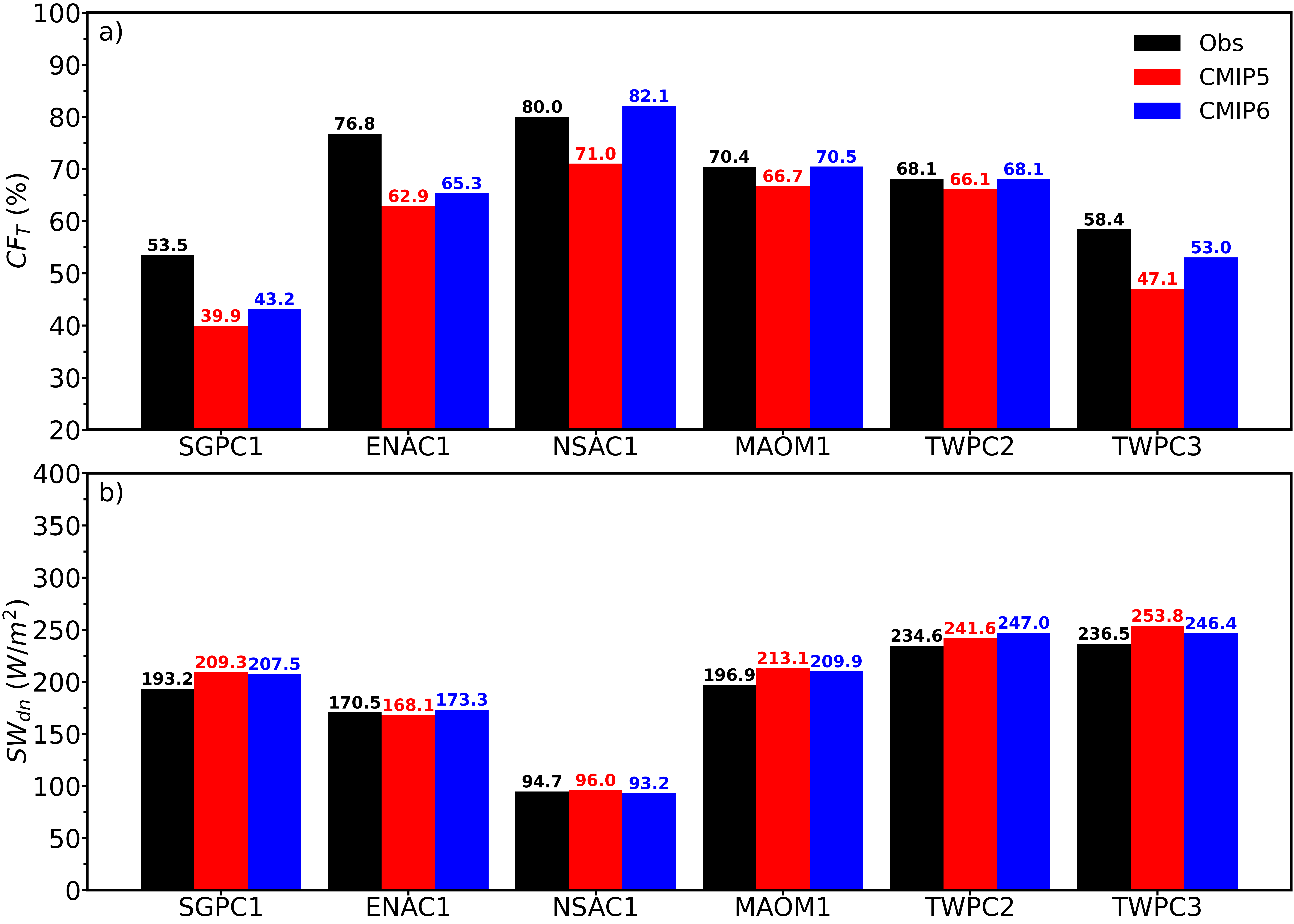Assessment of CMIP5 and 6 cloud and radiation simulations using ARM observations
Submitter
Xie, Shaocheng — Lawrence Livermore National Laboratory
Area of research
General Circulation and Single Column Models/Parameterizations
Journal Reference
Science
The long-term ground-based observations from six Atmospheric Radiation Measurement (ARM) user facility sites are used to statistically assess the performance of cloud and radiation simulations in climate models from the Coupled Model Intercomparison Project Phase 5 (CMIP5) and their successors in Phase 6 (CMIP6), originating from 10 different modeling institutes. The ARM sites, representative of diverse regions such as mid-latitude continents and oceans, the Arctic, and tropical continents and oceans, enable a comprehensive evaluation. This assessment highlights the various model biases in simulating clouds and radiation across typical climate regimes. The study also identifies improvements and degradation in model performance from the CMIP5 to the CMIP6 era, in comparison with ARM observations. It proposes potential reasons for these changes, offering insights into the further enhancement of climate models in the future.
Impact
The detailed examination of model biases can assist modelers in identifying parameterization issues not only in specific regions but also in certain physical processes, thereby providing valuable information for the future development of climate models.
Summary
In this study, the simulations of clouds and surface radiation from 10 CMIP6 models and their CMIP5 predecessors are compared to ARM ground-based observations over different climate regions. Both CMIP5 and CMIP6 models significantly underestimated the total cloud fraction (CFT) over the northern hemispheric mid-latitude. Over the tropical oceanic sites, five out of 10 CMIP6 models better simulated low-level CF than their CMIP5 predecessors. CMIP6 simulations generally agreed well with the ARM observations in CFT and cloud fraction vertical distributions over the tropical continental and coastal sites, while the CMIP5 and CMIP6 models exhibited diverse performances of clouds and shortwave radiations over the arctic site. The improvements in downwelling shortwave fluxes (SWdn) at the surface from the majority of CMIP6 compared to CMIP5 primarily resulted from the improved cloud fraction simulations.



